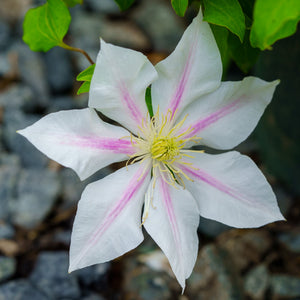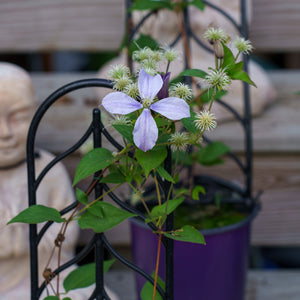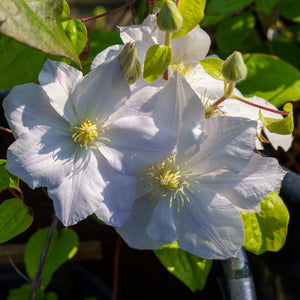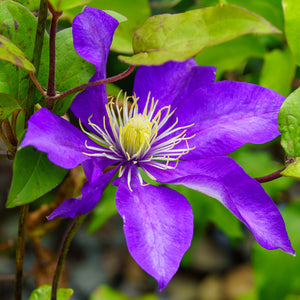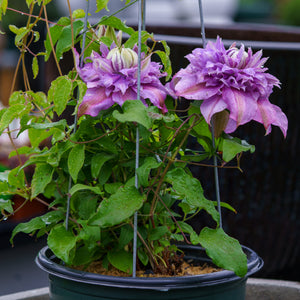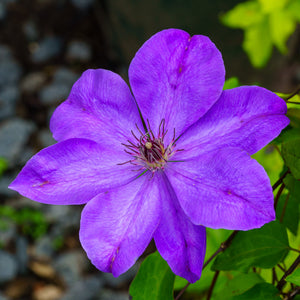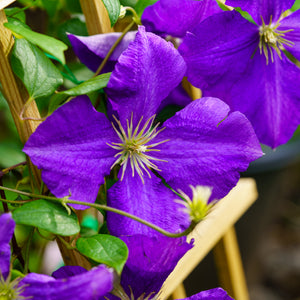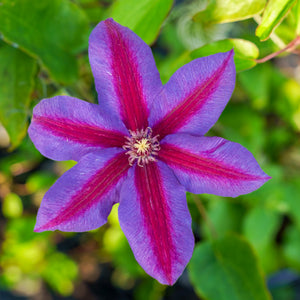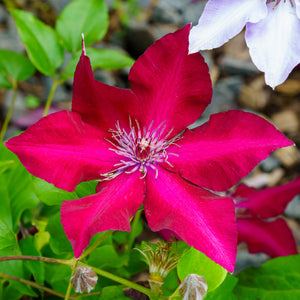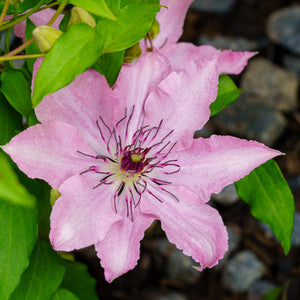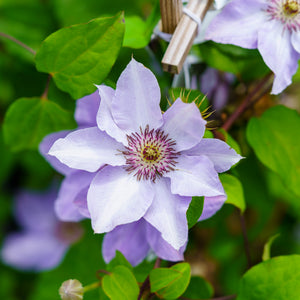The Clematis Guide
Clematis, often referred to as the "queen of climbers," brings a touch of elegance and dramatic beauty to any garden landscape. With its diverse range of vibrant flowers and lush foliage, Clematis plants are perfect for adding vertical interest and a burst of color to trellises, arbors, fences, and walls. These plants are admired for their ability to thrive in various conditions and their relatively easy care. Whether you're aiming to enhance your garden's visual appeal, create a stunning vertical display, or add a unique element to your space, Clematis offers a captivating and versatile solution. Explore our Clematis Guide to learn more about cultivating and caring for these enchanting plants, and discover how to incorporate them into your garden for lasting beauty and enjoyment.
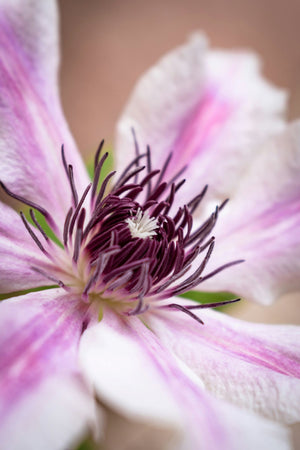
About Clematis
Clematis is a genus of flowering plants in the Ranunculaceae family, comprising about 300 species. These plants are native to various regions around the world, including North America, Europe, and Asia. The name "Clematis" is derived from the Greek word "klema," meaning vine, reflecting the characteristic climbing habit of many species in the genus.
Clematis plants are known for their wide variety of flower shapes, sizes, and colors. The flowers can be single, semi-double, or double, and come in shades of purple, blue, pink, red, white, and yellow. The blooming period varies depending on the species and variety, with some blooming in spring, summer, or fall. The foliage is typically green and can be either deciduous or evergreen, depending on the species. Some popular species and varieties of Clematis include Clematis montana, Clematis viticella, and Clematis jackmanii. Each species has its unique characteristics, but all share the common traits of beautiful flowers and a climbing growth habit.
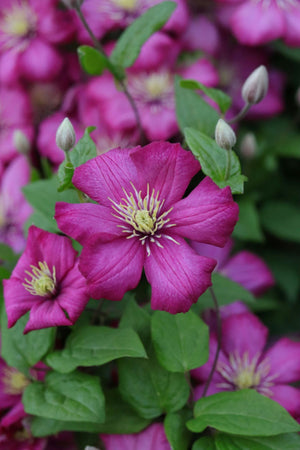
Planting Clematis
Clematis plants require specific planting conditions to ensure their successful establishment and flourishing growth. Here are some essential guidelines for planting and caring for Clematis:
Soil: Clematis prefers well-draining soil that is rich in organic matter. A loamy or sandy soil works best. Ensure the planting site is free from heavy clay or waterlogged conditions, which can cause root rot. Adding compost or well-rotted manure can improve soil fertility and drainage.
Light: Clematis thrives in full sun to partial shade. Most varieties prefer their tops in the sun and their roots in the shade. Choose a location with at least six hours of direct sunlight per day for optimal blooming. In hotter climates, some afternoon shade can help protect the plants from intense heat.
Watering: Clematis requires regular watering to keep the soil consistently moist but not waterlogged. Water the plants deeply, allowing the top inch of soil to dry out between waterings. During hot, dry periods, increase the frequency of watering to maintain soil moisture.
Planting Depth: Plant Clematis with the crown 2-3 inches below the soil surface to encourage strong root growth and prevent damage from frost. Space the plants 3-5 feet apart to allow for proper air circulation and growth. When planting in the ground, dig a hole twice as wide and the same depth as the root ball to encourage root spread.
Mulching: Apply a layer of organic mulch, such as compost or shredded leaves, around the base of the plants to retain moisture, suppress weeds, and regulate soil temperature. Mulching also helps keep the roots cool, which is beneficial for Clematis.
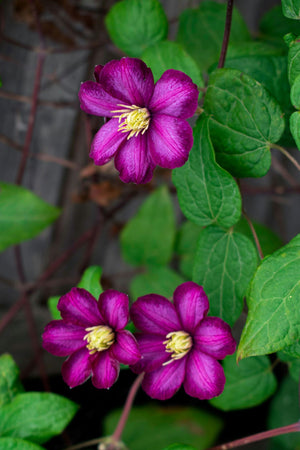
Care for Clematis
Clematis plants require specific care to ensure their optimal growth and health. Here are some general guidelines for the care of Clematis:
Watering: Keep the soil consistently moist during the growing season but avoid waterlogging. Water the plants deeply, allowing the top inch of soil to dry out between waterings. During hot, dry periods, increase the frequency of watering to maintain soil moisture.
Fertilizing: Clematis benefits from a balanced, slow-release fertilizer applied in the spring as the plants begin to grow. Follow the recommended dosage on the product label. You can also apply a second dose of fertilizer in mid-summer to encourage continuous blooming. Avoid over-fertilizing, as this can lead to excessive foliage growth at the expense of flowers.
Pruning: Pruning Clematis depends on the variety and its blooming period. Generally, Clematis is divided into three pruning groups:
- Group 1: Early-flowering varieties that bloom on old wood. Prune lightly after flowering to remove dead or damaged stems.
- Group 2: Large-flowered hybrids that bloom on both old and new wood. Prune in early spring to remove weak or dead stems and lightly trim to shape after the first flush of flowers.
- Group 3: Late-flowering varieties that bloom on new wood. Prune hard in late winter or early spring to about 12 inches above the ground.
Support: Clematis is a climbing plant and requires support to grow vertically. Use trellises, arbors, or fences to provide the necessary structure for the plant to climb. Secure the vines gently to the support structure to avoid damaging the stems.
Pests and Diseases: Clematis is relatively pest-resistant but can be susceptible to issues such as aphids, slugs, and clematis wilt. Inspect your plants regularly and treat any infestations promptly with appropriate organic or chemical controls. Maintain proper spacing and air circulation to reduce the risk of diseases.
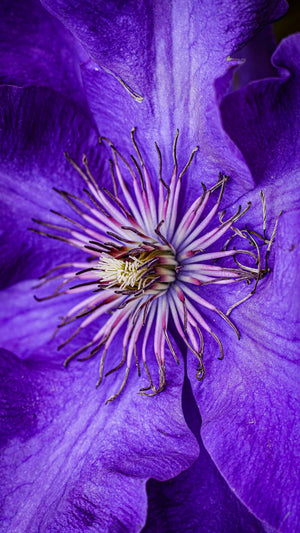
How to Use Clematis
Clematis offers versatility and can be utilized in various ways to enhance your garden and outdoor spaces. Here are some recommendations based on their characteristics:
Trellises and Arbors: Clematis’s climbing habit makes it perfect for trellises and arbors. Plant them at the base of these structures and train the vines to grow upward, creating a stunning vertical display of color.
Walls and Fences: Grow Clematis along walls and fences to add a burst of color and soften hardscapes. The vibrant flowers will create a striking backdrop and enhance the visual appeal of your garden.
Containers: Clematis can be grown in containers, making them a versatile choice for patios, balconies, or small gardens. Choose a large container with good drainage and place it in a sunny spot to enjoy the blooms up close.
Ground Cover: Some Clematis varieties, particularly the smaller ones, can be used as ground covers. Plant them in drifts or clusters to create a vibrant carpet of flowers.
Companion Planting: Clematis pairs beautifully with other climbing plants, such as roses and honeysuckle. Combine them to create a rich tapestry of colors and textures in your garden.
Conclusion
Clematis is a captivating and versatile addition to any garden or outdoor space. With their wide variety of vibrant flowers, vigorous growth, and relatively easy care, Clematis plants bring a touch of elegance and dramatic beauty to your environment. Their adaptability to various growing conditions and ease of care make them a favorite among gardeners of all levels. By following proper planting and maintenance techniques, you can fully harness the potential of Clematis to enhance your garden, creating a lasting impact.
Whether you seek to create stunning vertical displays, add visual interest to walls and fences, or enjoy their beauty in containers, Clematis can fulfill a variety of roles in your landscape design. Place them individually to highlight their unique blooms, or combine different species and varieties for a dynamic and visually appealing display. Clematis's resilience and adaptability also make them ideal for ground covers and companion planting.
Beyond their ornamental value, Clematis plants contribute to the overall beauty and charm of your garden ecosystem. With their enduring beauty, versatility, and ecological significance, Clematis plants bring delight and natural allure to your outdoor environment, enriching your gardening experience and enhancing the overall beauty of your landscape.

